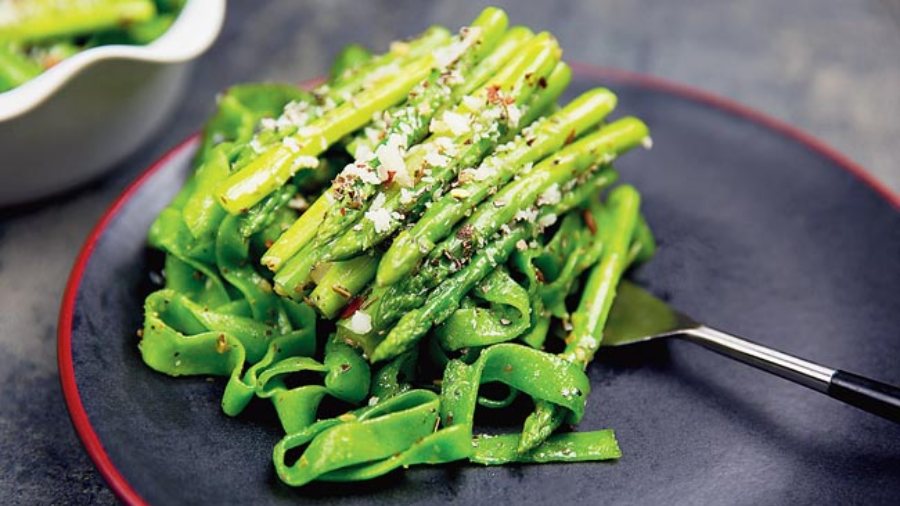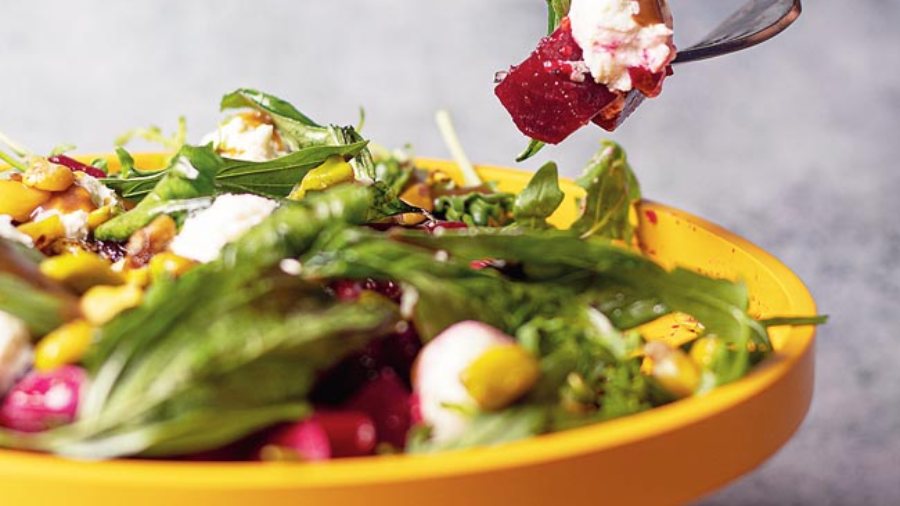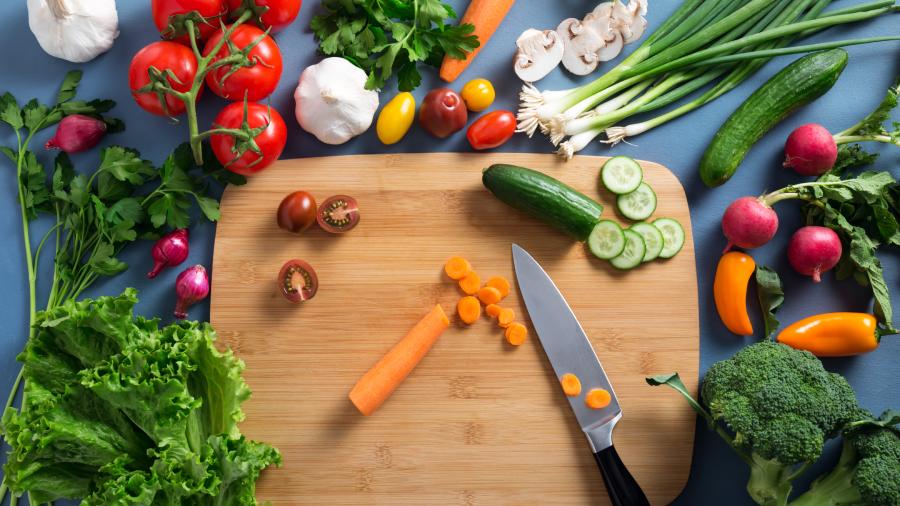Last weekend, I stayed in while we dug into popcorn and watched one of my favourite movies, Superman! My heart always skips a beat as Clark Kent transforms into his superhero avatar, swooping down and saving lives, all in a day’s work. When I think of food, kale is most definitely my superhero. No matter what I do, I always have a kale smoothie to kick-start my day. It is the one thing that somewhat salvages the days when my otherwise conservative food habits go askew.
And, before you ask me, let me tell you — what are superfoods!?
Super-it!
The first time I heard the word ‘superfood’, my fertile imagination threw a red cape on the back of an apple and saw it gliding through the air, rescuing one and all. Growing up, an apple a day kept the doctor away. But, where are the apples and papayas now? Do we have newer models on the food ramp?
Superfoods are nothing more than nutrient-dense, extremely healthy foods that are rich in compounds and provide health benefits. It’s a great way to amp up your food profile, as well as get with the trends, but most importantly, it’s an excellent way to prevent future health problems.
Prevention is better than cure
This adage holds truer today more than ever. Medicine and science have made inroads into understanding illnesses at a cellular level, and we can curb a lot of issues if we follow some basic principles.
The root cause of many illnesses is the body’s inability to fight off its attackers: viruses, bacteria, and parasites that assault our immune system. One of the best ways to up your immunity is to follow what I call the SEEK approach — Sleep adequately, Eat healthily, Exercise regularly, and Keep yourself clean.
Of these, eating is definitely top priority.
The A-Z of superfoods
I truly believe every natural food carries something special within itself. Be it the promise of good health, or an irreplaceable memory, food is essential to life as we know it. About time we learned the A to Z of these blockbusters:
A for Acai: A species of palm tree that produces small, purple, or green berries. They have a unique nutritional profile for a fruit, which is somewhat high in good fats and low in sugar. Loaded with trace minerals, acai berries contain anthocyanins which act as antioxidants for the body.
B for Broccoli: The OG superfood, containing rich volumes of Vitamin C and K, broccoli has been a table staple for decades. The verdant tree-like cruciferous vegetable packs flavour and nutrition in an easy-to-eat format.
PS. It goes wonderfully well with cheddar.
C is for Chia Seeds with a side of Cacao: The last decade saw the rise of many superfoods, but none as meteoric as the humble chia seed. They’re a rich source of B vitamins, thiamin and niacin as well as several dietary minerals. Soaking the seeds creates this jelly-like coating around them, which increases their bioavailability, i.e. their ability to be absorbed by the body.
Cacao is the seed from which, cocoa, cocoa butter, and chocolate are made. It has the highest sources of magnesium in nature. ‘Choc’-a-bloc of antioxidants, it also contains copper and selenium, both important for immunity.
G is for Goji: These flavorsome tiny red fruits are packed with the goodness of nature. They have been said to slow signs of aging, maintain eye health and strengthen kidneys and liver. A common participant in superfood blends, goji berries have fiber, iron, and vitamins C and A.
H is for Hemp: The non-mind-altering seed of the cannabis plant, hemp seeds, also known as hemp hearts, are an excellent source of omega 3 and omega 6 fatty acids, and fibre. It helps with weight management as well as stabilizing blood sugars. A tablespoon of this will help you protect the brain and keep your heart healthy!
K is for Kale and Kefir: And now for my favourite — kale! Not only does it have Vitamins C and K, iron, calcium and a wide range of nutrients, massaging the kale leaves with dressing to soften them is oh-so therapeutic. An absolute cracker of an ingredient, it lends well to soups, salads, sandwiches and even wraps.
In texture and looks, kefir is very similar to yogurt, but kefir has its origins in kefir grains, a bacterial culture that produces a fermented, mildly carbonated drink. It carries a flora of multiple probiotic bacteria that are gut-friendly, and promote superior intestinal health.
M is for Mangosteen and Moringa: Yes! For those who have ever been to Thailand, this fruit brings back summer memories. It is a treasure trove of minerals and vitamins, essential for maintaining many bodily functions including DNA production, muscle contraction, wound healing and overall immunity.
M is also for Maca Root: Peru is a veritable superfood land, where quinoa and maca root grow in abundance. This ancient vegetable, also known as Peruvian ginseng, is high on iron and promotes better immunity. It is an adaptogenic plant, giving the body the resistance to manage and adapt to external influences, resulting in increased immunity.
Closer home, moringa, or sahjan, is an excellent source of calcium, potassium, iron and vitamins A, C and E. It is known to offer women greater protection against breast cancer, due to its anti-inflammatory qualities.
S is for Seaweed: A highly nutritious food that is low in calories, wakame, or seaweed, provides certain nutrients not often found in plants, such as iodine, vitamin D and B12. It’s great as a snack, or with a bowl of ramen. A word of caution: read the label for the sodium content in the brand you are purchasing, as certain processes could up the sodium value in the wakame.
W is for Wheatgrass: Fresh wheatgrass juice is considered to be a “living food” as it contains many anti-inflammatory properties. It helps rid the body of toxins as well as aids digestion. Most importantly, it helps improve cognitive function and improves hand-eye coordination.
With so many superfoods to choose from, where do we even start? Should we bid adieu to our cereals, grains and pulses and binge on a superfood diet? As you may have already guessed, the answer is ‘not entirely’. Superfoods are a fabulous way to augment your daily meal, but that in no way means other foods do not provide essential nutrients. Spinach, apples and legumes are as important a part of any healthy diet as kale, mangosteens and seaweed. Every food has its nutritional benefits, one just needs to understand their composition.

Spinach tagliatelle with Peruvian Asparagus
INGREDIENTS
• 150g baby spinach
• Sprinkle of salt
• 250g plain/all-purpose flour
• 2 organic eggs
• Generous amount of olive oil
• 1 whole onion sliced
• 5 cloves of garlic smashed
• 1 bundle of Peruvian asparagus, blanched in salted water
METHOD:
• Place baby spinach into a pan and put on the stove top on medium heat.
• Sprinkle a pinch of salt and cook, with the lid on, mixing it with a wooden spoon.
• Switch off the stove and add the hot spinach to a food processor, blending it until it becomes smooth.
To make the spinach pasta dough:
• Pour 250g flour on a wooden board, create a well, and add 2 eggs and one heaped tablespoon of your spinach cream.
• Whisk the eggs with the spinach (using a fork) and slowly mix the flour by pinching the sides in, then combine the rest.
• Once the spinach and egg have disappeared into the flour, use your hands to combine the rest of the flour and repeat the same motion to bring it all together, then knead the spinach pasta dough.
• If you are happy with the consistency ,and there is a lot of flour on the board, just scrape it to the side, and keep kneading.
• When it is smooth and soft, create a ball of green pasta dough and wrap it tightly using a plastic wrap, then leave to the side for 30 minutes.
• Once the time is up, sprinkle flour over your board, unwrap the dough and dust some extra flour on top. Sprinkle flour on top of the pasta machine and also on top of the piece of dough.
• Flatten this piece slightly with your hands, before putting it through the pasta machine, on the widest setting. Keep going one notch lower till the pasta sheet is very thin, and you should partly see your hand, only then it's done .
• Once you have a beautiful, smooth sheet of pasta, roll the pasta sheet and press from the top. Use a sharp knife and cut in thin strips .
• Boil a large pot of water, add a pinch of sea salt, and cook for 4-5 minutes.
• In another pan put in olive oil , smashed garlic, sliced onions and let it wilt, add blanched asparagus to it, shake it, add salt, pepper and herbs, remove from flame. Top with parmesan cheese.
• Assembling: Spoon the pasta on the plate , top it with a blob of butter and sauteed asparagus and parmesan cheese.

Beetroot pistachio feta salad
INGREDIENTS
• 4 medium beetroots
• 60g feta cheese
• 2tbsp roughly chopped parsley
• Chili oil honey lemon vinaigrette
• 200g rocket leaf
• 50g roasted chopped pitachio
For Lemon Vinaigrette:
• 3tbsp lemon juice
• 2tbsp olive oil
• 2tbsp chili oil
• 2 garlic cloves, minced
• ½tsp black pepper
• ½ tsp salt (or to taste)
•1tsp organic honey
•1tsp paprika powder
METHOD:
•For salad, roast the beetroot after wrapping in foil, drizzled with olive oil, salt and pepper.
•After removing the skin of the beetroots, chop the beetroot into cubes and do the same with the feta cheese.
•Roughly chop the parsley. Combine beetroot, feta cheese, parsley with the lemon vinaigrette and serve.
•For lemon vinaigrette, mix all ingredients together in a bowl and whisk slightly.

Vidisha Bathwal is the founder of Paprika Gourmet, an exotic artisan catering service brand in Calcutta. She’s also a passionate foodie and a fitness enthusiast
